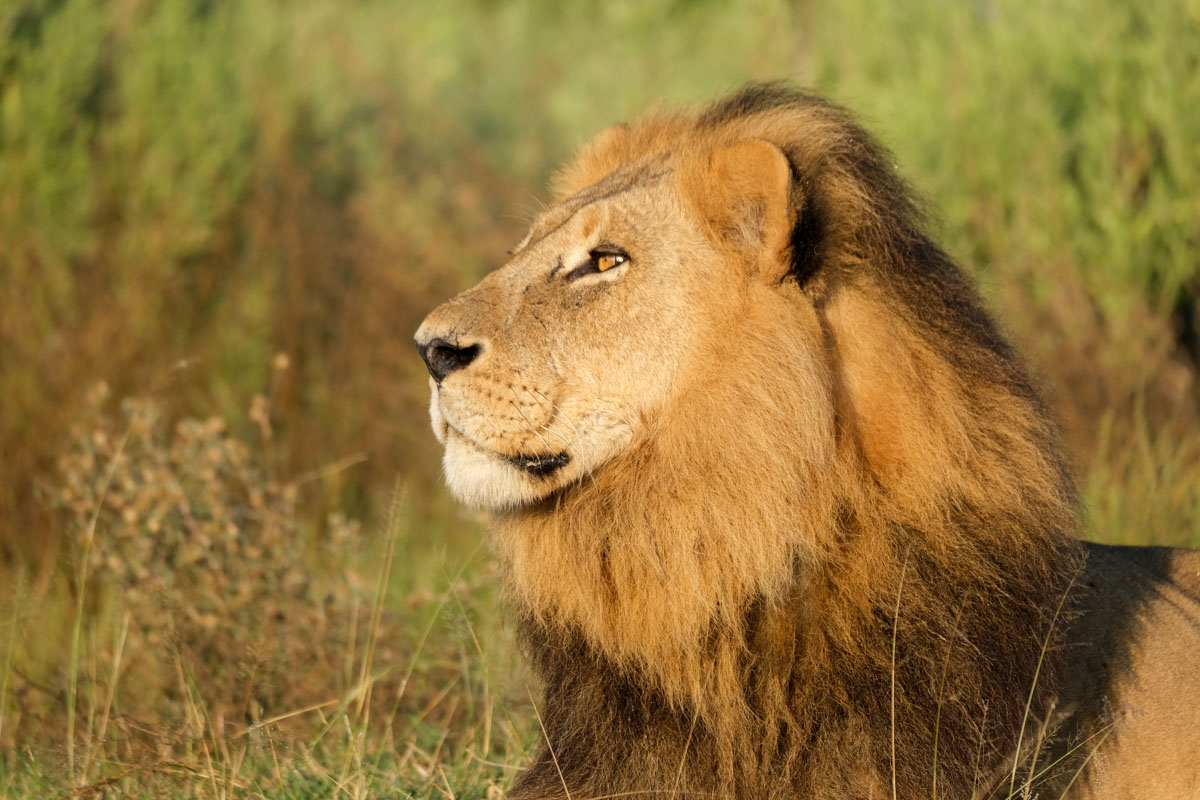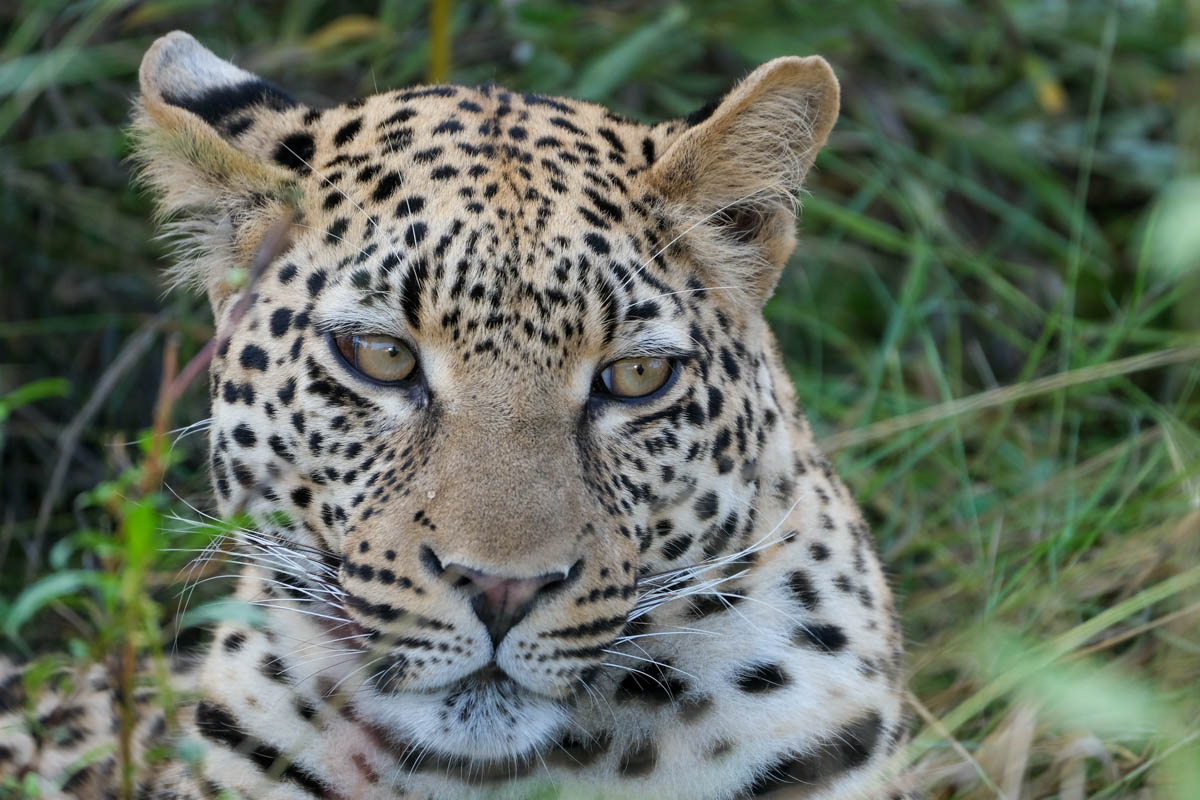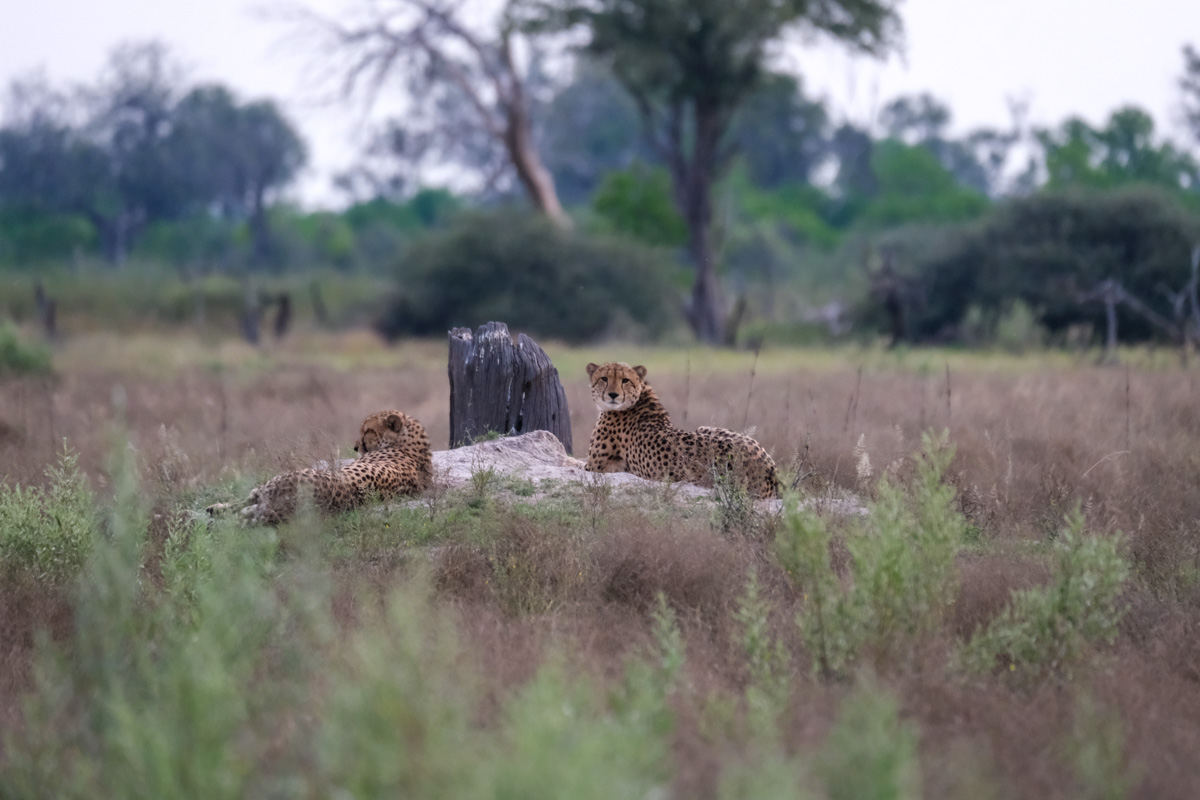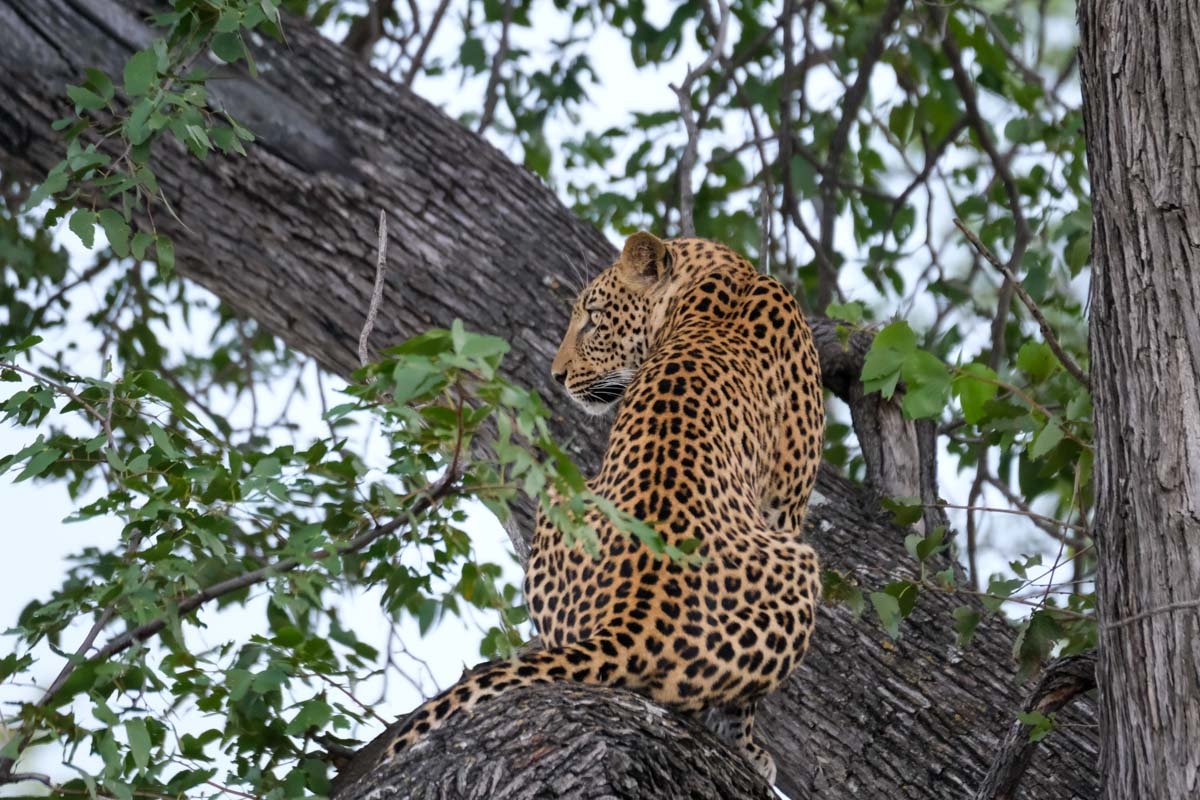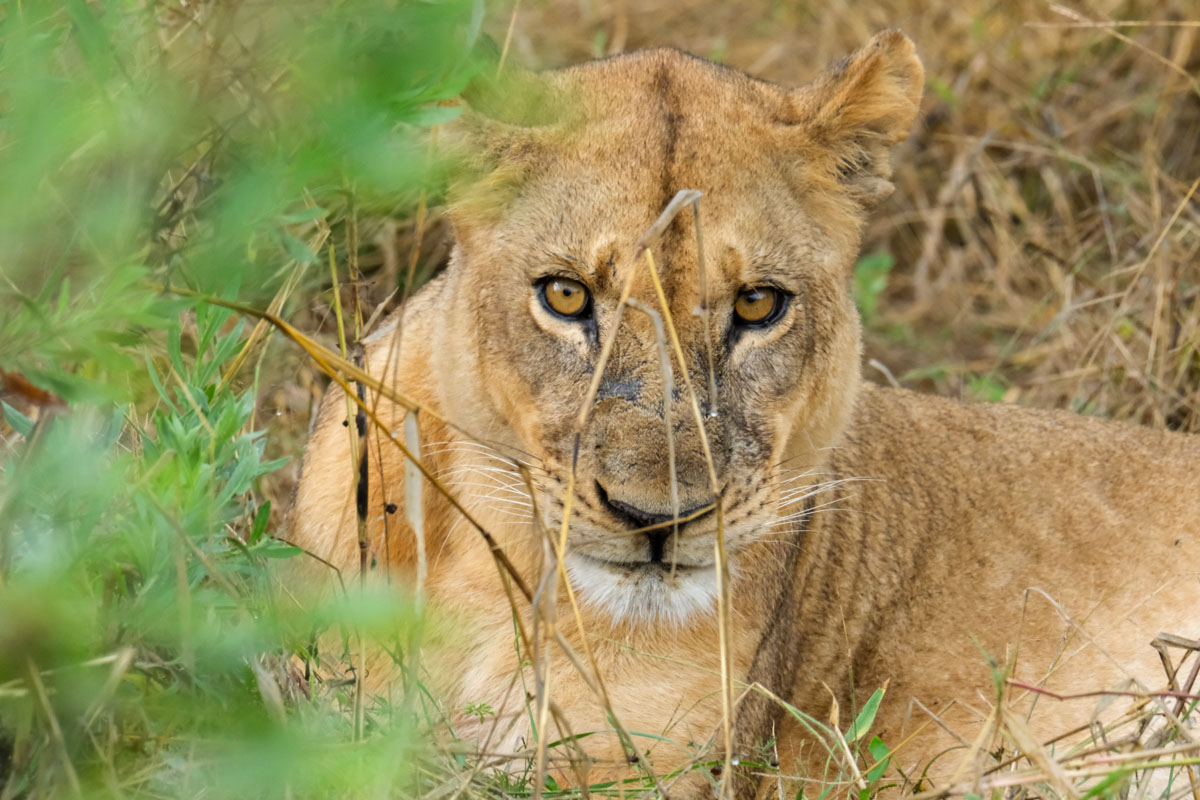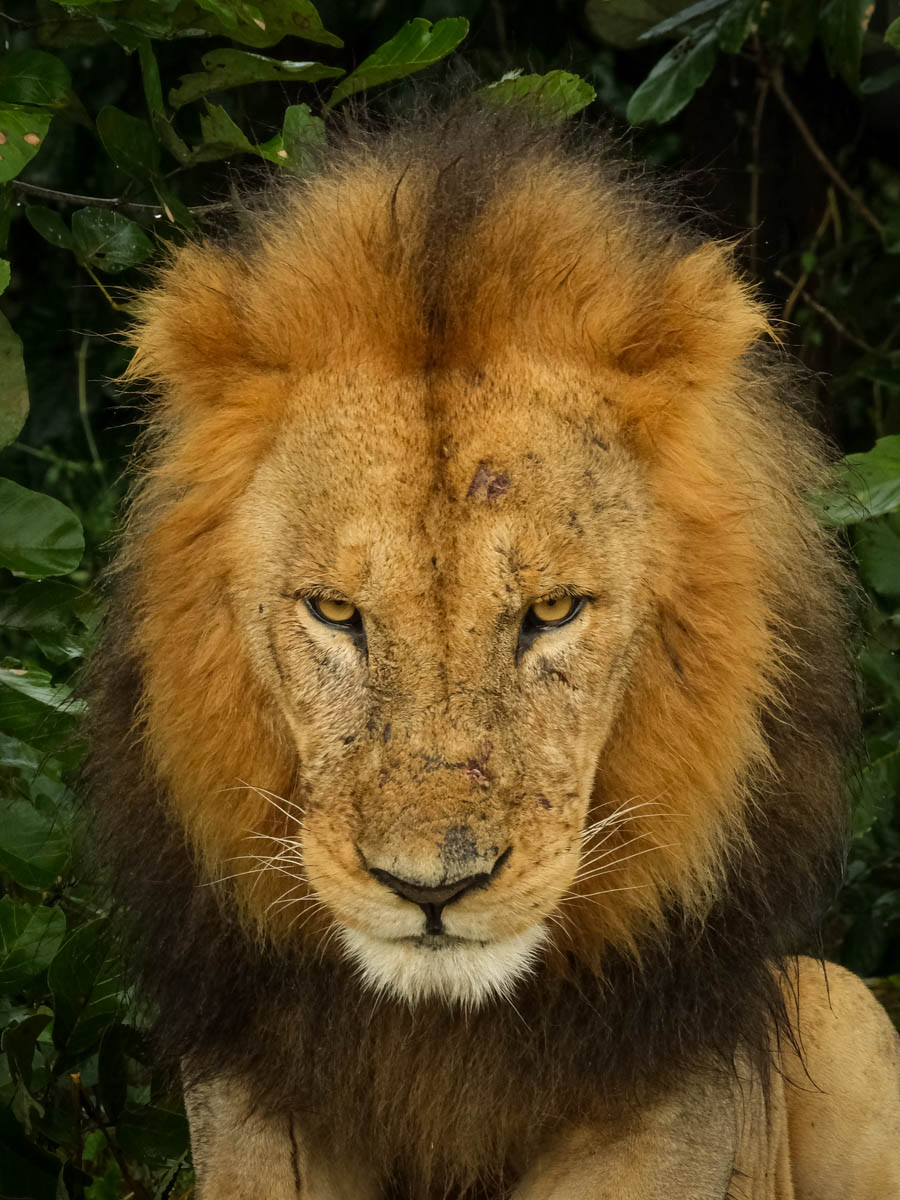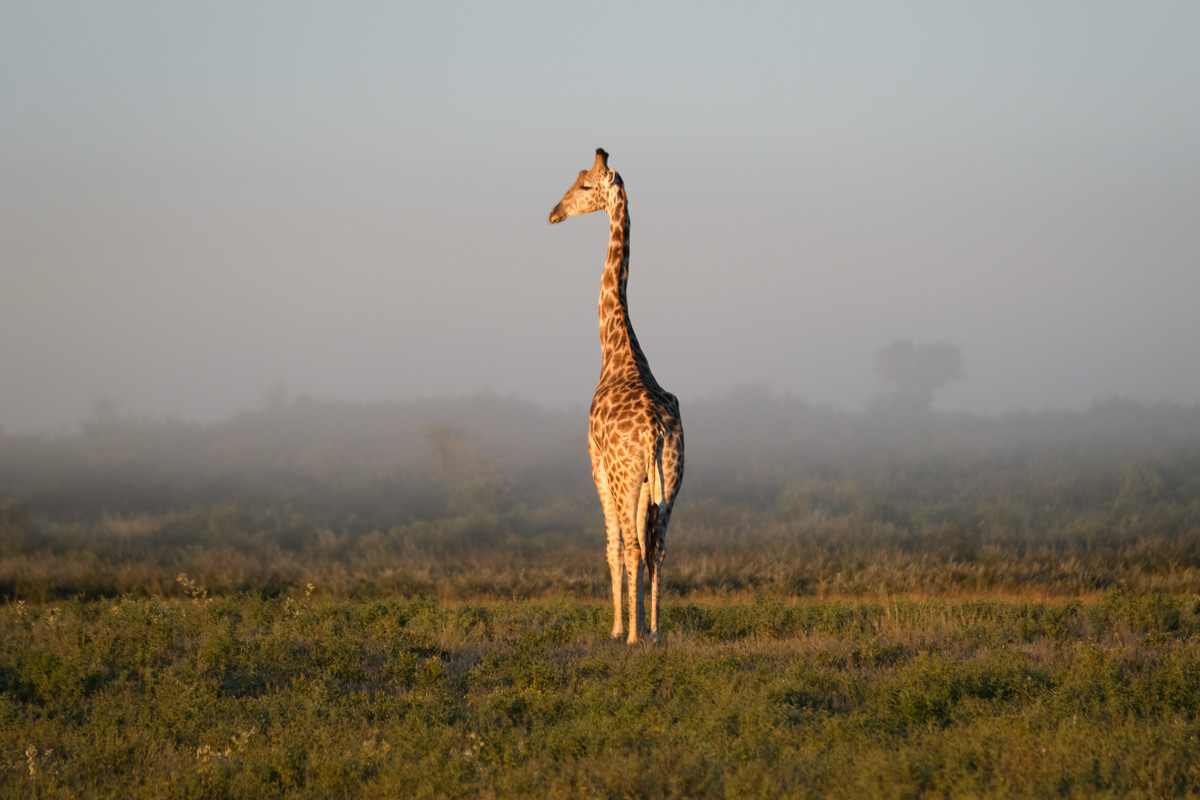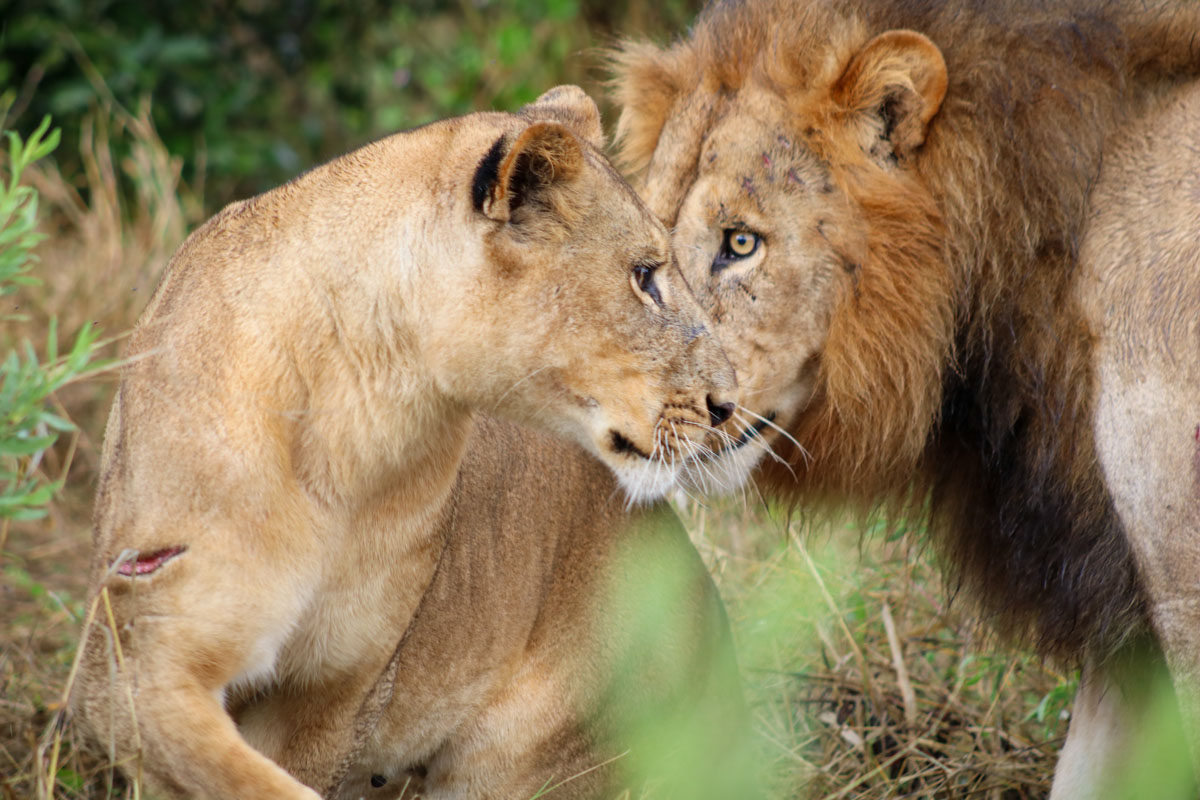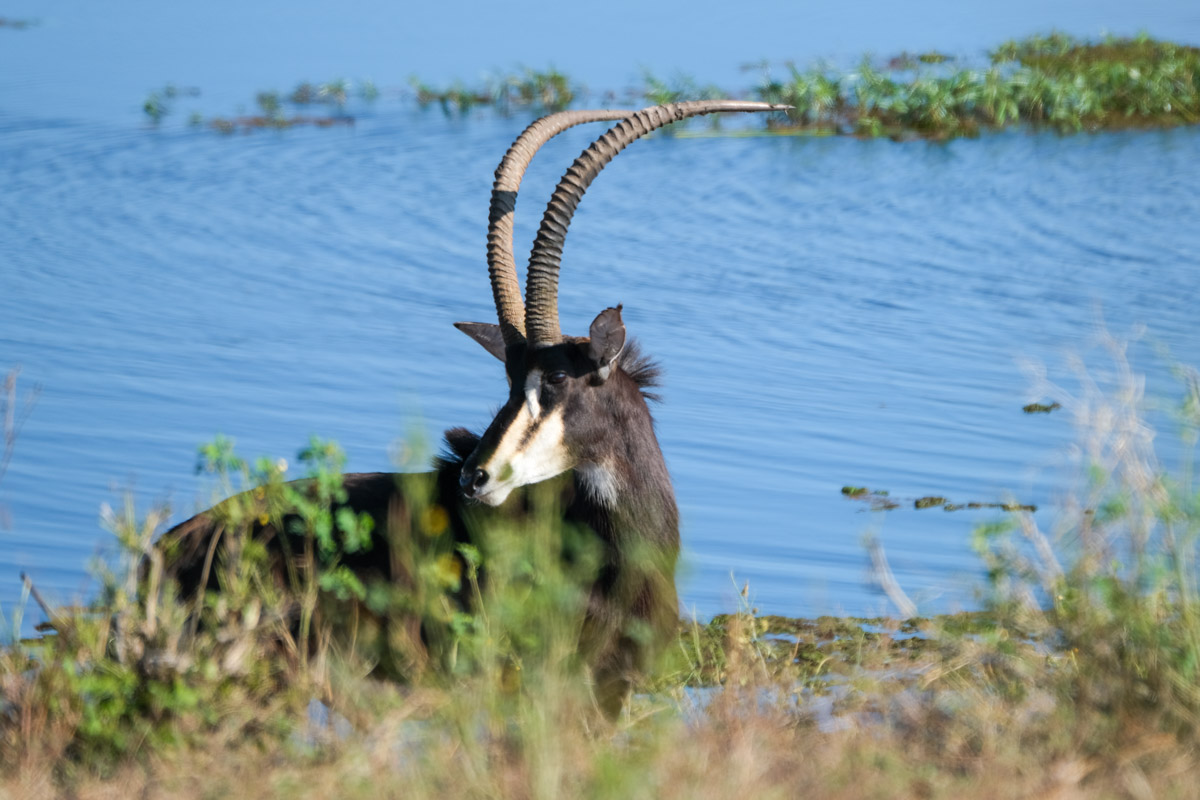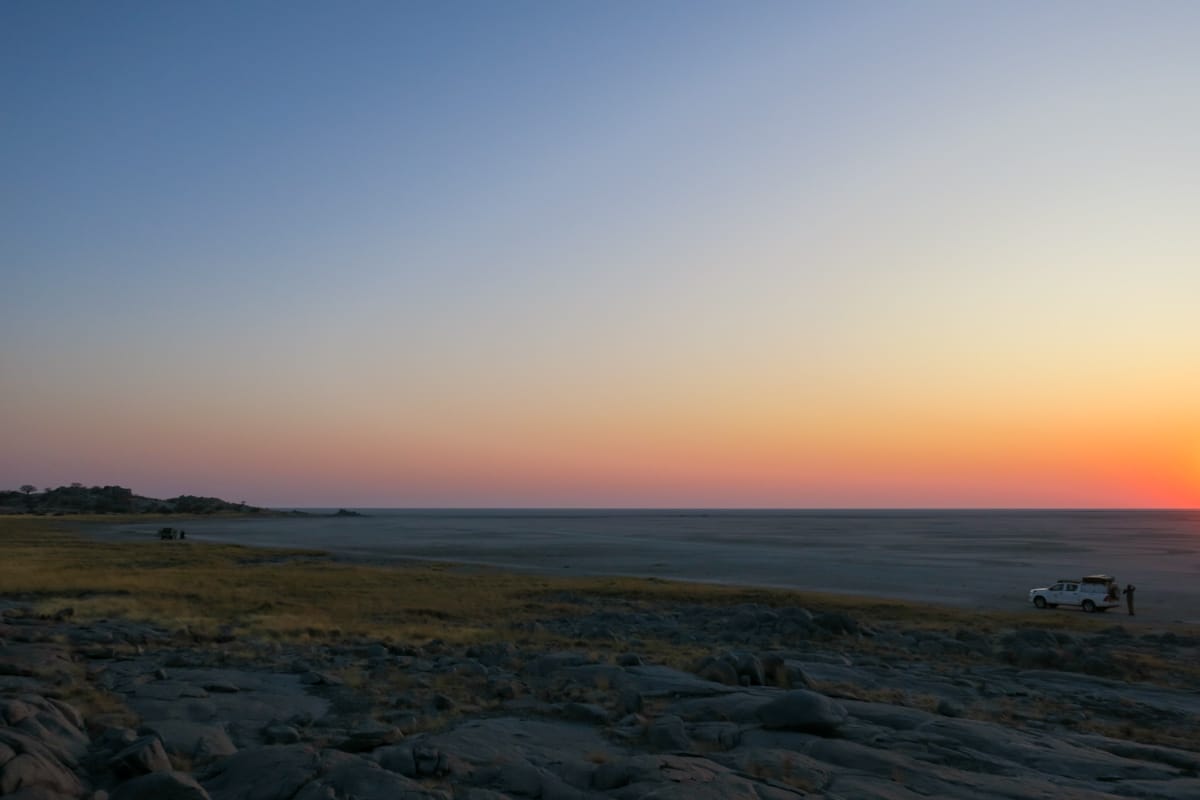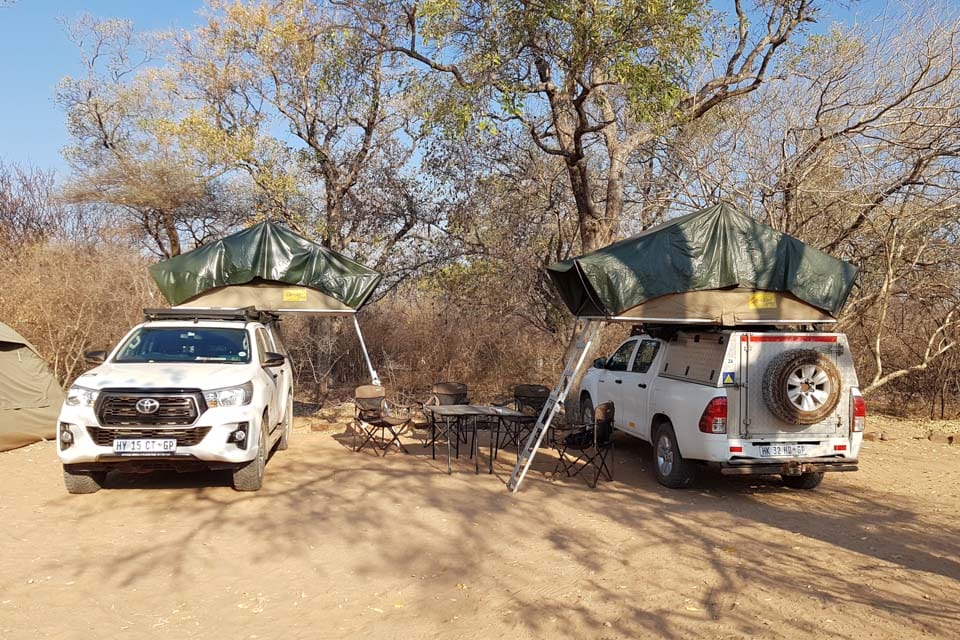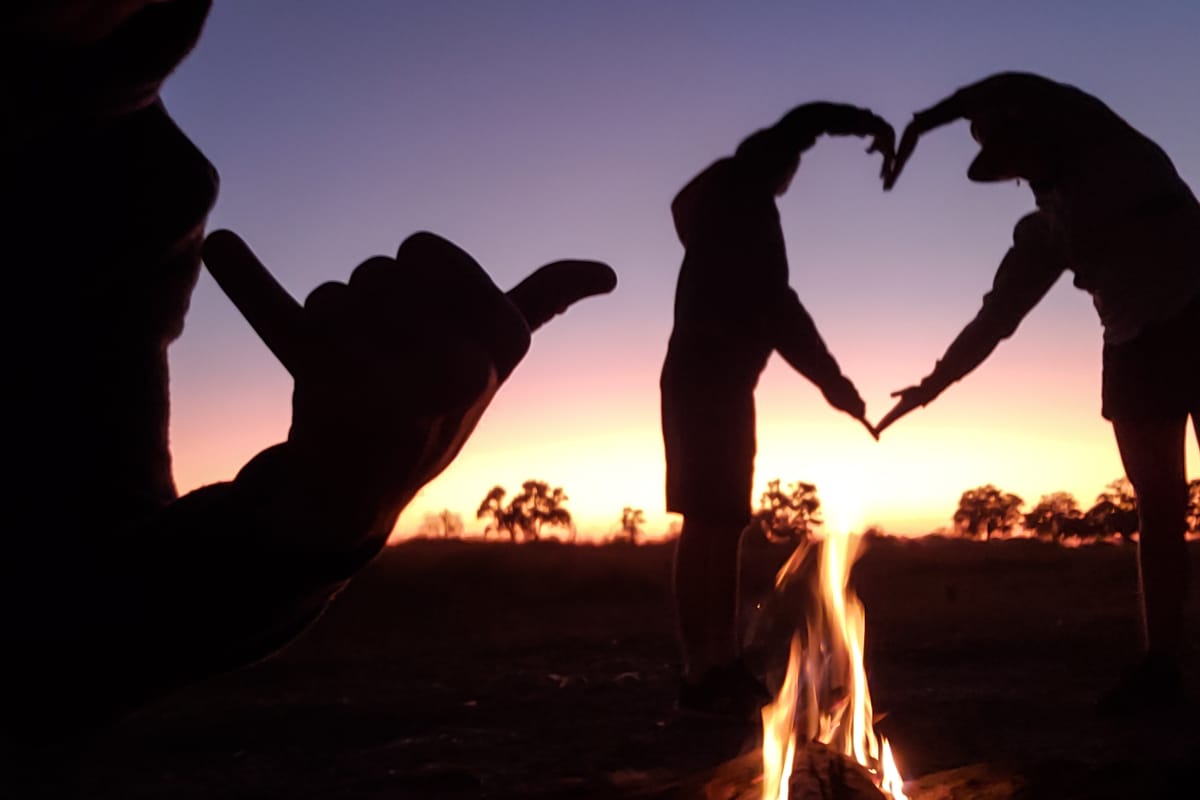Two families on the road:
- Léon, 13, and his parents Delphine and Yannick, on their fourth trip
- Roxane, 6, Capucine, 13, and their parents Gilles and Aurélie, on their first trip
This year, we are taking our friends along on this 17-day adventure. Upon arriving in Maun, the two families picked up their 4x4s. We are feeling tired from the journey, but we remain awake, excited to have arrived in Africa. After filling up with fuel, we relax in Maun at our guesthouse.
Our first destination is the Kalahari, where we are going for four days. There is much more vegetation than last year, but there are also a few more animals. We stop at a watering hole where around thirty marabou storks are basking, drinking and interacting with each other. Our friends spot their first giraffes on the way to Motopi camp. During these three days, we see dozens of oryx, ostriches and squirrels. We catch a glimpse of a caracal being hunted by a group of oryx and a young lion.
We then head to Boteti, where we find some comfort. After a nice shower and a little rest, we set off for an afternoon tour. The river is teeming with animals: elephants, zebras, wildebeests, jackals, giraffes, hippos… The landscape is like a postcard brought to life by the stampede of wildebeests in rut and the ensuing chaos. Our friends observe their first elephants, admiring their calmness and imposing power.
After a stormy evening and a night lulled by the rain, we set off for Maun. On the track, we spot lion tracks. We are hopeful of encountering one, so we follow them closely. In vain… Back in civilisation and on tarmac roads, we fill up with petrol and provisions.
Third stop in the Moremi Game Reserve. After a journey punctuated by rain, storms and large puddles, we discover a pair of lions quietly settled at the edge of the savannah. They must have fled the tall grass and rain and are trying to dry themselves by licking themselves diligently. We stay for a long time watching them. We hold our breath, bombarding them with photos and videos, trying to realise that we are face to face with two wild lions. Magical. We arrive at the camp with pleasure and amazement. We did not expect such comfort.
After taking out a bat and sleeping peacefully, we set off to explore the park at dawn. We return somewhat empty-handed. We returned in the afternoon, still hoping to cross paths with the big cats. But we only encountered hippos, elephants and baby elephants, giraffes, ostriches and warthogs. The next day, we set off again at dawn in search of the big cats. But nothing!
The afternoon was more fruitful. We were extremely lucky to see a leopard in its shelter and up in a tree, and we were over the moon! But it was on our way back that we spotted a pair of cheetahs near the camp and, a little further on, a pair of lions. We revelled in the spectacle and couldn’t get enough of watching them. After feasting on this unique moment, we fall asleep happy. We are awakened a few hours later by the roar of lions.
Early in the morning, we decide to go back to see the leopard. We zigzag between the very wet areas to find our way back. After a few minutes, we come across two lions, most likely the same ones we heard during the night. Two males, two young lions a few metres away, are basking in the sun. We have the immense honour of being alone with them, of being able to observe them at our leisure, of enjoying the moment. They reward us with a reciprocal roar, a moment that remains magical and unforgettable. We leave them a little dazed but very happy to have witnessed this moment.
Ten minutes later, we are at a standstill, shovels and cables in hand, trying to pull one of our two 4x4s out of the mud. A French family with their local guide and another vehicle manage to pull the car out. We laugh about it in the evening and it remains a fond memory!
We continue on our way to find the leopard’s shelter. We watch it for a long time as it hunts flies and stretches. Once again, we are amazed.
On the same day, we head to the Khwai concession to return to our favourite camp. Our guests discover it for the first time and share our feelings of serenity and wonder. We are on the riverbank, close to the hippos and elephants. The scene is majestic and peaceful. It is very difficult to tear ourselves away and set off to explore the reserve. We enjoy this incredible setting where elephants pass close by us, giving us the impression of living alongside them. At night, under the starry sky, we hear all the sounds of nature. From crickets to the laughter of hyenas, from hippos to the overturned rubbish bin of a curious hyena. A real gem!
We then set off for Savuti. Unlike in previous years, we didn’t see any big cats. The overall experience was rather mixed, especially as the camp’s location was not very pleasant. This accentuated the contrast and disappointment with Khwai.
On the way to the Chobe River Front, we were lucky enough to see hyenas by the side of the road. There were five or six of them, lying quietly in the shade. We arrived at a magnificent campsite by the river, very well maintained and populated by vervet monkeys.
At the end of the afternoon, we head to the riverbank and are lucky enough to observe dozens, even hundreds, of elephants near the river. We even end up surrounded by them. With the engines turned off, we stay there for several tens of minutes observing the organisation, kindness and interactions between the elephants and their calves. We revel in this spectacle!
The next day, we spend one last day in Chobe National Park, where we choose to take a boat trip to observe the wildlife from this vantage point. The landscapes are breathtaking. We have fond memories of this experience, even if it is more touristy and less wild.
The trip is coming to an end, and it was magnificent once again. We discover and rediscover it over the years and are always amazed by all that nature has to offer.
A huge thank you to Julie and Vincent for their support and valuable advice.
Published on: 11 June 2025
More stories from our self-drivers
12 April 2021
Each corner of Namibia is a treasure and the possibilities are endless. We can't wait to return!
21 August 2023
I had been waiting for this trip for 20 years! ... and I was not disappointed. Those 17 days exceeded my wildest expectations.
11 January 2024
We feed our minds with the sounds of the animal world: birdsong, the sound of the wind in the trees, lions roaring...

